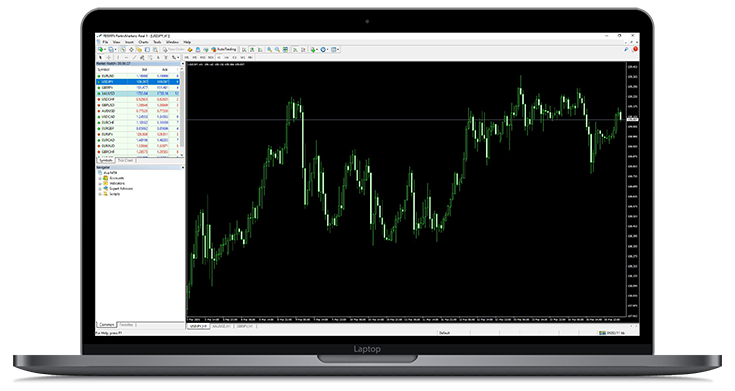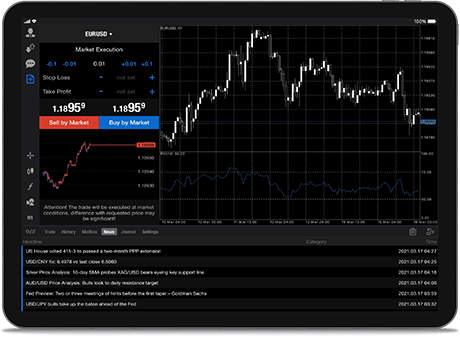If there’s one thing that gets forex traders’ pulses racing more than caffeine and FOMO combined, it’s the glorious market breakout. You know the drill: the price has been sulking around in a boring sideways range for days, everyone’s twiddling their thumbs, and then - BOOM! It smashes through support or resistance and suddenly the charts look like they’ve had a rocket take off.
But before you mortgage your house to jump on the next breakout candle (seriously, please don’t), let’s break down why breakouts happen, how to spot them, and how not to get fooled by those cruel imposters that we call false breakouts. Because nothing says “welcome to trading” quite like a chart that tricks you into buying the top or selling the bottom.
What Exactly is a Forex Breakout?
In forex, a breakout happens when the price moves beyond a significant level of support or resistance with increased momentum and volume. Think of it like this: price has been stuck inside a tiny, cramped room (a trading range), and eventually it gets fed up, kicks the door down, and charges into new territory.
Traders love breakouts because they often signal the start of a strong trend or at least a short-term move that can make some serious pips. Of course, the market doesn’t always give us what we want, sometimes breakouts are real, and sometimes they’re fake, like those knock-off designer handbags you see on dodgy websites.
Breakouts can happen upwards (bullish breakout) or downwards (bearish breakout). Spotting which direction, the price will go, and whether the move is genuine, is the holy grail of breakout trading.
Why Do Market Breakouts Happen?
Breakouts are not random acts of market rebellion. They happen because of a build-up of pressure, liquidity, and trader psychology. Understanding the “why” behind a breakout is half the battle, and the other half is not panicking when your trade doesn’t go according to plan.
1. Accumulation of Orders: Picture thousands of traders setting buy orders just above resistance or sell orders just below support. Eventually, price hits those levels, triggering all those waiting orders like a row of dominos. Voilà - a market breakout.
2. News and Events: Economic data, central bank announcements, or a politician blurting something reckless can shove the market through key levels. (Shout out to, Jerome Powell, for singlehandedly turning sideways charts into rollercoasters.)
3. Stop Hunts: Big players - often called “smart money”- sometimes push prices through obvious levels to trigger stop losses, creating artificial momentum. This is like the market giving you a little nudge… and then laughing as you tumble.
Breakouts happen because markets are dynamic, emotional, and full of participants with different agendas. And yes, sometimes the chaos is exactly what makes trading fun (or terrifying).
Famous Breakouts in Forex History
If you think breakouts are just intraday gimmicks, think again. Some have shaped entire market cycles and left traders either celebrating or crying into their candlestick charts.
● EUR/USD Breakout of 2014. The euro looked strong… until the European Central Bank hinted at stimulus and the U.S. dollar flexed its muscles. EUR/USD smashed through 1.3500 and didn’t stop until it dropped over 3,000 pips in less than a year. Traders who caught that breakout are still bragging at parties.
● GBP/USD “Brexit Night” (2016). The pound decided to impersonate a skydiver without a parachute. The 1.5000 level broke during the Brexit referendum, and GBP/USD plummeted to around 1.3200 in hours. That’s not a breakout; it was a financial cliff dive.
● USD/JPY in 2022. Thanks to the Fed hiking rates faster than you could say “inflation crisis,” USD/JPY broke out above 120.00 and bulldozed its way toward 150.00. Traders who didn’t ride that wave still have nightmares about this.
These examples show that breakouts aren’t just theoretical- they can create massive opportunities if you spot them correctly. And yes, they can also create spectacular losses if you don’t.
How to Spot a Potential Breakout
Spotting a breakout isn’t about clairvoyance (if you had that, you’d be sipping cocktails on your own private island by now). It’s about reading price action, volume, and context to give yourself an edge.
1. Look for Consolidation: Before a breakout, the market often ranges tightly. The smaller the range, the more explosive the breakout can be. Picture a coiled spring: the tighter it’s wound, the bigger the “boing.”
2. Watch Key Levels: Mark major support and resistance zones. The more times price bounces off a level, the stronger the eventual breakout could be. If everyone’s eyes are on the same level, expect the fireworks to go off.
3. Volume Confirmation: Breakouts with high trading volume tend to be real. Low-volume breakouts? That’s just the market pretending to be exciting.
4. Fundamental Catalysts: Check the economic calendar. Events like Non-Farm Payrolls, interest rate decisions, or geopolitical shocks are classic breakout triggers. (Warning: they also spike your blood pressure.)
By combining technical levels with context and volume, you can start to differentiate between likely breakouts and wishful thinking.
The Dreaded False Breakout
Ah, false breakouts, the forex equivalent of being catfished on a dating app. Everything looks perfect at first, then reality smacks you in the face.
A false breakout happens when price temporarily breaches a support or resistance level, luring traders in, only to reverse and trap them in losing positions. Cue collective screaming in the forex trading community.
How to Spot a False Breakout Before it Destroys Your Account
1. Lack of Volume: If the breakout isn’t backed by strong volume, it’s probably as genuine as a three-dollar bill.
2. Fast Rejection: Price pokes above/below a level but quickly snaps back inside the range. That’s your cue that the breakout is faker than a reality TV romance.
3. Overly Obvious Levels: If everyone and their grandma is watching the same level; big players may engineer a false breakout to grab liquidity.
4. Wait for Confirmation: Don’t chase the first breakout candle like it’s the last train of the night. Wait for a retest of the broken level to see if it holds as new support or resistance.
False breakouts exist to keep traders humble, irritated, and slightly paranoid, but if you recognise them early can save your account from unnecessary drama.
Strategies for Forex Trading Breakouts
Trading breakouts can be thrilling, but like riding a rollercoaster with your eyes closed, it can also be terrifying if you don’t have a plan. Here are some strategies to help you ride the wave without wiping out.
1. The Classic Breakout Strategy: Enter when price breaks a significant level with volume confirmation. Place stops just inside the previous range in case it’s a fake-out. This approach is straightforward but remember: the market doesn’t owe you pips.
2. The Retest Strategy: Wait for price to break out, then pull back to test the level it just broke. If the level holds as new support or resistance, enter the trade. This avoids chasing false moves and gives a better risk-to-reward ratio.
3. The News Breakout Strategy: Trade during high-impact events (NFP, interest rate decisions, central bank speeches). The volatility can be insane, but that’s where the opportunity lives. (Warning: your blood pressure may rise faster than your account balance.)
4. Avoid Over-Trading Breakouts: Not every wiggle on the chart is a breakout. Patience is your best friend. Only take trades where the technical and fundamental evidence lines up, otherwise, you’re just throwing darts blindfolded.
By combining technical levels, confirmation signals, and smart risk management, you can navigate breakouts without constantly sweating bullets.
Psychological Warfare: Breakouts and Your Brain
Breakouts aren’t just a battle on the charts, they’re a battle in your head. Fear and greed love to tag-team traders at every twist and turn.
● FOMO (Fear of Missing Out) Seeing a breakout take off without you can make even the most disciplined trader impulsive. Suddenly, you’re chasing price like it’s a free pizza van on your street.
● Fear of False Breakouts On the flip side, paranoia about a fake move can make you hesitate, leaving you on the sidelines while the “real” breakout zooms past.
● Overconfidence After Success Catch a breakout perfectly once, and suddenly you think you’re the next trading messiah. Markets have a way of humbling you… repeatedly.
The key is discipline and a solid plan. Decide your levels, define your risk, and stick to your strategy. Laugh at your mistakes, learn from them, and remember: the market doesn’t care about your feelings, but it does reward preparation.
Conclusion: Breakouts are Awesome… Until They’re Not
Breakouts are one of the most exciting and potentially profitable parts of forex trading. They represent shifts in supply and demand, opportunities for big moves, and yes, plenty of traps to keep traders humble.
The secret to surviving (and thriving) in breakout trading is simple:
● Learn to spot consolidation and key levels.
● Watch volume for confirmation.
● Don’t blindly trust the first candle.
● Respect false breakouts, they exist purely to teach humility.
● Manage your risk like your account depends on it… because it does.
When a breakout happens, don’t panic, don’t chase blindly, and for the love of pips, don’t mortgage your house to trade it. Somewhere out there, thousands of traders are facepalming alongside you, and sometimes, that’s the most comforting thing in the world.
With the right strategy, patience, and a little bit of humour, you can ride the thrill of breakouts without becoming a cautionary tale. Because in the end, the market is entertaining, but it’s a lot more fun when you don’t cry over your charts.










